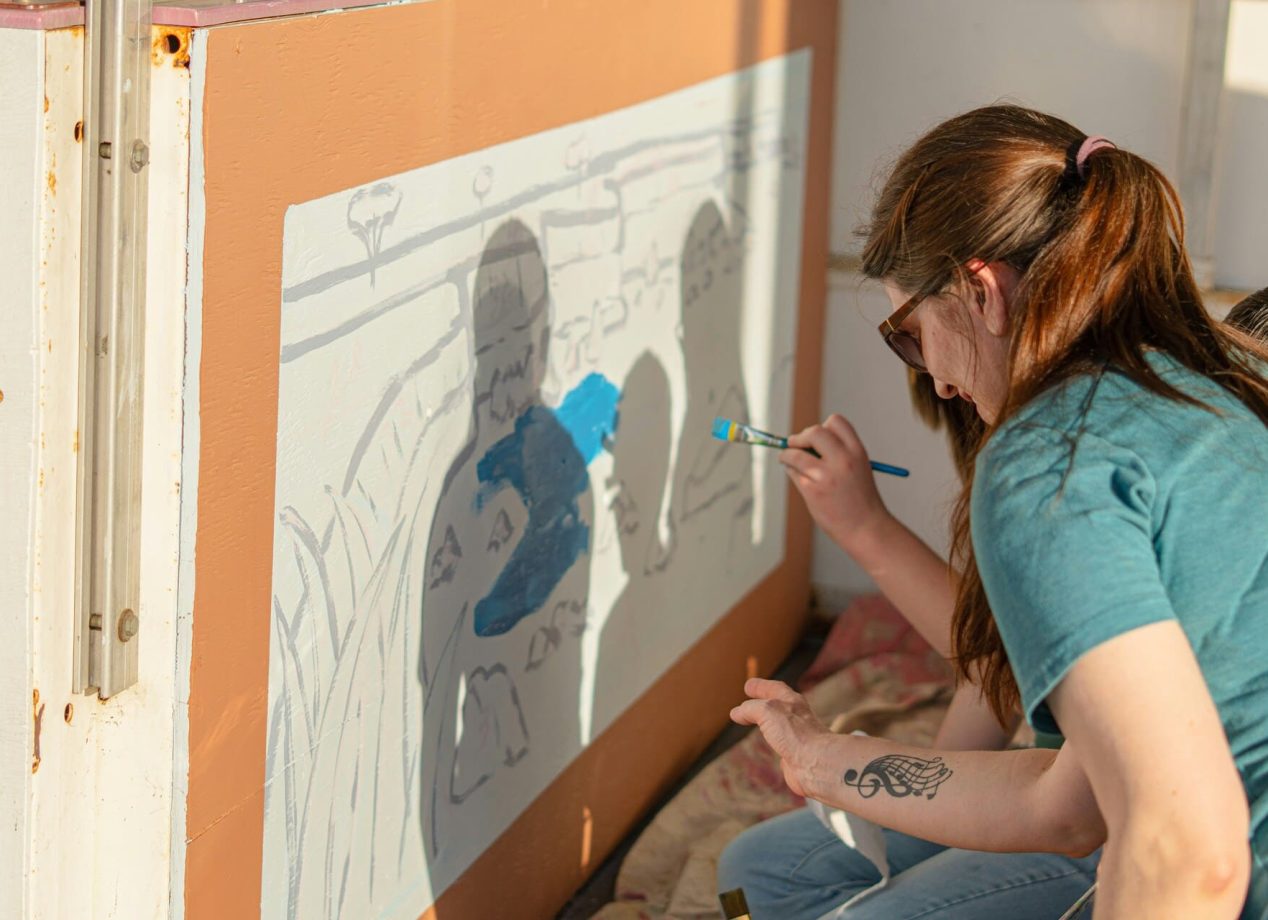As the boundaries between creativity, commerce, and technology become increasingly fluid, the role of arts education is undergoing scrutiny. How can academic institutions continue to cultivate deep cultural knowledge and creative thinking while equipping students with the tools they need to thrive professionally?
Banner image by Createasea, sourced on Unsplash.
In a recent opinion piece for The Hechinger Report, David Bellingham, an art historian, author, and Program Director, MA Art Business at Sotheby’s Institute of Art, advocates for a much-needed evolution in arts education. Read on for a breakdown of Bellingham’s recommendations for preparing the next generation of arts leaders to succeed in today’s complex workforce.
1. Bridging Art and Employment Through Practical Skills
Arts education has traditionally emphasized creative development, critical theory, and historical knowledge. But in today’s job market, graduates must also understand how the cultural economy operates, including the operations of galleries, the evolution of markets, and the ways in which cultural value is assigned and negotiated.
Integrating business fundamentals into arts curriculum means empowering students to navigate the real-world systems their creativity will interact with. Skills like budgeting, project management, marketing strategy, and client communication are no longer peripheral but essential.
At the postgraduate level especially, an increasing number of programs are blending the study of art history with modules on legal frameworks, digital strategy, and market analysis. These hybrid models prepare graduates for a wider range of roles, from consultancy and collection management to strategy roles in galleries.
2. Embedding Hands-On Learning and Internships
One of the strongest predictors of long-term career satisfaction is early exposure to professional environments. Whether through internships, live case studies, or project-based learning, the opportunity to apply theory in practice offers a formative experience for students.
Yet too often, these opportunities are available only to a select few, typically those who can afford unpaid internships or happen to be well-connected. When hands-on learning is embedded into the structure of the academic program itself, access becomes more equitable and the outcomes more impactful.
To combat this challenge, some institutions are responding by integrating applied learning into their course design from day one, ensuring students engage with real clients, industry briefs, and sector leaders. These experiences deepen understanding, demystify the professional landscape, and often lead directly to career opportunities. They also help students build the soft skills—adaptability, collaboration, and communication—that employers value.
3. Embracing a Global Outlook
The art world is one of the most international sectors in the cultural economy. A single artist may have galleries representing them in multiple countries, works auctioned globally, and exhibitions that travel across continents. Programs that embed international content—whether through multi-city study experiences, global lectures, or peer collaboration across borders—offer students a broader and more agile understanding of the cultural sector. These experiences shape globally minded professionals who can engage with diverse audiences and adapt to shifting market trends.
Today’s graduate programs must reflect this international orientation through partnerships with cultural institutions in key global hubs, site-based study modules, or participation in major events like international art fairs. These frameworks not only educate students but immerse them in the rhythms and realities of the industry they are preparing to enter.
4. Teaching Digital Tools and Emerging Technologies
The digital transformation of the cultural sector is no longer theoretical but already underway. From virtual exhibition spaces and online auctions to blockchain-based provenance records, digital innovation is changing the ways in which the art market functions.
Arts professionals are increasingly expected to be digitally literate, if not digitally fluent. Knowing how to work with design software, manage digital archives, run analytics on audience data, or develop a compelling online presence can be as valuable as understanding 19th-century art movements.
Leading academic programs are actively responding to this shift. They incorporate hands-on workshops in digital strategy, encourage experimentation with emerging tools, and engage industry experts to explore real-world case studies. By embedding digital learning throughout the curriculum, they ensure students graduate prepared to work effectively in a digital-first environment.
5. Instilling Ethics and Social Responsibility
Arts education has always played a role in shaping critical consciousness, but today’s cultural landscape demands more than awareness. Whether it's navigating the complexities of restitution, addressing issues of representation, or incorporating sustainable curation practices, graduates are expected to take ethical considerations seriously.
Embedding ethics into the heart of the curriculum requires integrating questions of power, access, and responsibility into every area of study. Discussions about whose voices are included, how narratives are shaped, and who benefits from cultural capital are essential if students are to become thoughtful leaders.
This holistic approach also reflects the broader shift in the creative economy toward values-driven leadership. Professionals who understand the ethical dimensions of their work are increasingly seen not only as culturally literate but as socially responsible, and that distinction matters more than ever.
Toward a More Responsive Model of Arts Education
While many institutions are just beginning to explore these shifts, a few have already embedded them deeply into their educational models. Bellingham has ensured these core essentials are at the root of the MA Art Business offered at Sotheby’s Institute of Art. The integration of academic inquiry, market relevance, digital literacy, and social awareness is the foundation of the program.
As the cultural economy continues to evolve, so too must the institutions that train the next generation of arts professionals. By embracing interdisciplinary, globally minded, digitally fluent, and ethically grounded approaches, arts education can remain not only relevant but transformative.
